|
|
Home
Consulting
Feasibility Studies
Unbiased Feasibility
Business Plans
Project Flow
Project Financing
Technologies
Gasification
Pyrolysis
Plasma Arc
Biomass Gasification
Waste Gasification
News
Live News Feeds
F.A.Q.
About Us
Contact Us
Glossary
Brochure (PDF)
Copy of a sanitized Study
Draft Example Agreement
|
|
GASIFICATION
Gasification is an environmental friendly solution to an
environmental problem
The world is facing rapid growth in energy demand,
persistently high energy prices, and a challenge to
reduce carbon dioxide emissions from power generation
and manufacturing. No single technology or resource can
solve the problem, but gasification can be part of the
solution along with renewable power sources such as wind
and energy efficiency programs.
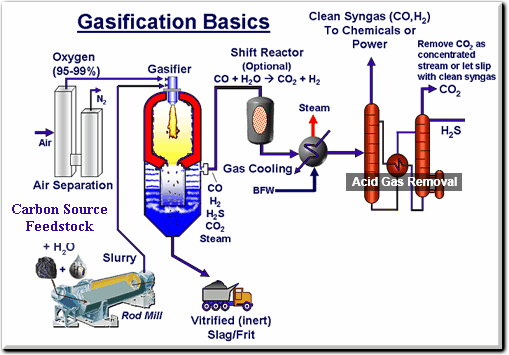
Gasification can enhance the U.S. and world energy
portfolio while creating fewer air emissions, using less
water, and generating less waste than most traditional
energy technologies. Whether used for power generation,
for production of substitute natural gas, or for
production of a large number of energy intensive
products, gasification has significant environmental
benefits over conventional technologies.
Gasification provides significant environmental benefits
-
Gasification plants
produce significantly lower quantities of air
pollutants.
-
Gasification can
reduce the environmental impact of waste disposal
because it can use waste products as feedstock,
generating valuable products from materials that
would otherwise be disposed as wastes.
-
Gasification
byproducts are non-hazardous and are readily
marketable.
-
Gasification plants
use significantly less water than traditional
coal-based power generation, and can be designed so
they recycle their process water, discharging none
into the surrounding environment.
-
Carbon dioxide (CO2)
can be captured from an industrial gasification
plant using commercially proven technologies. In
fact, since 2000, the Great Plains Substitute
Natural Gas plant in North Dakota has been capturing
the same amount of CO2 as a 400 MW coal power plant
would produce and sending that CO2 via pipeline to
Canada for Enhanced Oil Recovery.
-
Gasification offers
the cleanest, most efficient means of producing
electricity from coal and the lowest cost option for
capturing CO2 from power generation, according to
the U.S. Department of Energy.
-
Gasification can be accomplished using MASS BURN
techniques which is in fact the most widely used
methodology throughout the US and EU. High tech
incineration as well as collection techniques from
landfill gasses are effective and commonly employed
due to their relative costs compared to plasma ( the
most expensive) and pyrolysis.
ECONOMIC
BENEFITS
-
Gasification can
compete effectively in high-price energy
environments to provide power and products.
-
Gasification can be
used to turn lower-priced feedstock, such as petcoke
and coal, into very valuable products like
electricity, substitute natural gas, fuels,
chemicals, and fertilizers. For example, a chemical
plant can gasify petcoke or high sulfur coal instead
of using high-priced natural gas, thereby reducing
its operating costs.
-
While a gasification
power plant is capital intensive (like any very
large manufa cturing plant), its operating costs are
potentially lower than conventional processes or
coal-fired plants because gasification plants are
more efficient and require less back-end pollution
control equipment. With continued research and
development efforts and commercial operating
experience, the cost of these units will continue to
decrease. cturing plant), its operating costs are
potentially lower than conventional processes or
coal-fired plants because gasification plants are
more efficient and require less back-end pollution
control equipment. With continued research and
development efforts and commercial operating
experience, the cost of these units will continue to
decrease.
-
Gasification offers
wide fuel flexibility. A gasification plant can vary
the mix of solid feedstock, or run on gas or liquid
feedstock—giving it more freedom to adjust to the
price and availability of its feedstock.
-
The ability to
produce a number of high-value products at the same
time (polygeneration) also helps a facility offset
its capital and operating costs. In addition, the
principal gasification byproducts (sulfur and slag)
are readily marketable. For example, sulfur can be
used as a fertilizer and slag can be used in roadbed
construction or in roofing materials.
-
A state-of-the-art
gasification power plant with commercially available
technology can perform with efficiency in a range of
38-41 percent. Technology improvements now in
advanced testing will boost efficiency to
significantly higher levels.
-
Gasification
can increase domestic investment and jobs in
manufacturing industries that have recently been in
decline because of high energy costs.
-
Many predict that
coal-based power plants and other manufacturing
facilities will be required to capture and store
CO2, or participate in a carbon cap and trade
market. In this scenario, gasification projects will
have a cost advantage over conventional
technologies. While CO2 capture and sequestration
will increase the cost of all forms of power
generation, an IGCC plant can capture and compress
CO2 at one-half the cost of a traditional pulverized
coal plant. Other gasification-based options,
including production of motor fuels, chemicals,
fertilizers, or hydrogen, to name a few, have even
lower carbon capture and compression costs. This
will provide a significant economic and
environmental benefit in a carbon-constrained world.
(See Carbon Capture & Compression Costs.)
-
Gasification can
replace volatile natural gas as a fuel or a
feedstock. Read more.
-
Gasification is
being used around the world. Read more about
gasification economics in practice.
PRODUCTS AND APPLICATIONS
Chemicals and Fertilizers
Modern ga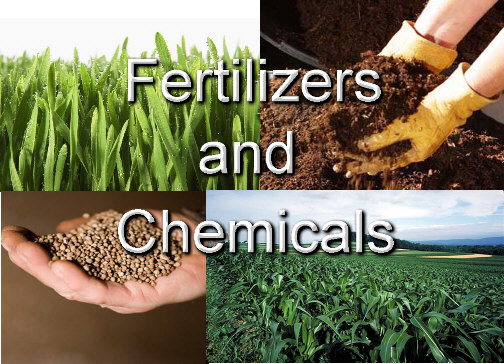 sification has been used in the chemical
industry since the 1950s. Typically, the chemical
industry uses gasification to produce methanol as well
as chemicals, such as ammonia and urea, which form the
foundation of nitrogen-based fertilizers. The majority
of the operating gasification plants worldwide produce
chemicals and fertilizers. And, as natural gas and oil
prices continue to increase, the chemical industry is
developing additional coal gasification plants to
generate these basic chemical building blocks. sification has been used in the chemical
industry since the 1950s. Typically, the chemical
industry uses gasification to produce methanol as well
as chemicals, such as ammonia and urea, which form the
foundation of nitrogen-based fertilizers. The majority
of the operating gasification plants worldwide produce
chemicals and fertilizers. And, as natural gas and oil
prices continue to increase, the chemical industry is
developing additional coal gasification plants to
generate these basic chemical building blocks.
Eastman Chemical Company helped advance the use of coal
gasification technology for chemicals production in the
U.S. Eastman's coal-to-chemicals plant in Kingsport,
Tennessee converts Appalachian coals to methanol and
acetyl chemicals. The plant began operating in 1983 and
has gasified approximately 10 million tons of coal with
a 98 to 99 percent on-stream availability rate.
Power Generation with Gasification
Coal can be used as a feedstock to produce electricity
via gasification, commonly referred to as Integrated
Gasification Combined Cycle (IGCC). This particular
coal-to-power technology allows the continued use of
coal without the high level of air emissions associated
with conventional coal-burning technologies. In
gasification power plants, the pollutants in the syngas
are removed before the syngas is combusted in the
turbines. In contrast, conventional coal combustion
technologies cap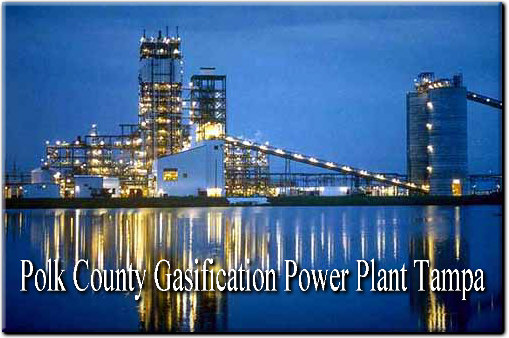 ture the pollutants after combustion,
which requires cleaning a much larger volume of the
exhaust gas. This increases costs, reduces reliability,
and generates large volumes of sulfur-laden wastes that
must be disposed of in landfills or lagoons. ture the pollutants after combustion,
which requires cleaning a much larger volume of the
exhaust gas. This increases costs, reduces reliability,
and generates large volumes of sulfur-laden wastes that
must be disposed of in landfills or lagoons.
Today, there are 15 gasification-based power plants
operating successfully around the world. There are three
such plants operating in the United States. Plants in
Terre Haute, Indiana and Tampa, Florida provide baseload
electric power, and the third, in Delaware City,
Delaware provides electricity to a Valero refinery. (See
World Gasification-Based Power Generating Capacity)
Substitute Natural Gas
Gasification can also be used to create substitute
natural gas (SNG) from coal and other feedstocks,
supplementing U.S. natural gas reserves. Using a "methanation"
reaction, the coal-based syngas—chiefly carbon monoxide
(CO) and hydrogen (H2)—can be profitably converted to
methane (CH4). Nearly identical to conventional natural
gas, the resulting SNG can be shipped in the U.S.
natural gas pipeline system and used to generate
electricity, produce chemicals/fertilizers, or heat
homes and businesses. SNG will enhance domestic fuel
security by displacing imported natural gas that is
generally supplied in the form of Liquefied Natural Gas
(LNG).
Hydrogen
for Oil Refining
Hydrogen, one of the two major components of syngas, is
used in the oil refining industry to strip impurities
from gasoline, diesel fuel, and jet fuel, thereby
producing the clean fuels required by sta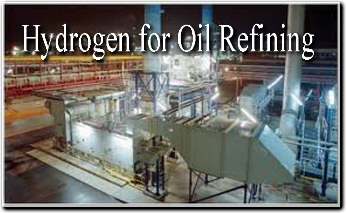 te and federal
clean air regulations. Hydrogen is also used to upgrade
heavy crude oil. Historically, refineries have utilized
natural gas to produce this hydrogen. Now, with the
increasing price of natural gas, refineries are looking
to alternative feedstocks to produce the needed
hydrogen. Refineries can gasify low-value residuals,
such as petroleum coke, asphalts, tars, and some oily
wastes from the refining process, to generate both the
required hydrogen and the power and steam needed to run
the refinery. te and federal
clean air regulations. Hydrogen is also used to upgrade
heavy crude oil. Historically, refineries have utilized
natural gas to produce this hydrogen. Now, with the
increasing price of natural gas, refineries are looking
to alternative feedstocks to produce the needed
hydrogen. Refineries can gasify low-value residuals,
such as petroleum coke, asphalts, tars, and some oily
wastes from the refining process, to generate both the
required hydrogen and the power and steam needed to run
the refinery.

Transportation
Fuels
Gasification can be used to produce transportation fuels
from oil sands, coal and biomass. Read more about each
of these technologies.
GASIFICATION INDUSTRY
Gasification has been reliably used on a commercial
scale worldwide for more than 50 years by the chemical,
refining, and fertilizer industries and by the electric
power industry for more than 35 years. Currently, there
are more than 140 gasification plants—with more than 420
gasifiers—operating worldwide.
Nineteen of those gasification
plants are located in the United States. (See Existing
Gasification Plants in the U.S).
The Future of Gasification
Worldwide gasification capacity is projected to grow 70
percent by 2015, with 80 percent of the growth occurring
in Asia. The prime movers behind this expected growth
are the chemical, fertilizer, and coal-to-liquids
industries in China, oil sands in Canada, polygeneration
(hydrogen and power or chemicals) and substitute natural
gas in the United States, and refining in Europe

-
The use of
gasification is expanding. Several gasification
projects are under development to provide steam and
hydrogen to upgrade synthetic crude in the oil sands
industry in Canada. In addition, the paper industry
is exploring how gasification can be used to make
their operations more efficient and reduce waste
streams.
-
A number of factors
contribute to a growing interest in gasification,
including volatile oil and natural gas prices, more
stringent environmental regulations, and a growing
consensus that CO2 management will likely be
required in power generation and energy production.
(See U.S. Energy Prices).
-
China is expected to
achieve the most rapid growth in gasification
worldwide. Since 2004, 29 new gasification plants
have been licensed and/or built in China. In
contrast, no new gasification plants have begun
operation in the United States since 2002.
-
The gasification
industry is expected to grow significantly in the
United States despite a number of challenges,
including rising construction costs and uncertainty
about policy incentives and regulations.
TRANSPORT FUELS
Transportation Fuels from Oil Sands
The "oil sands" in Alberta, Canada are estimated to
contain as much recov erable oil (in the form of bitumen)
as the vast oil fields in Saudi Arabia. However, to
convert this raw material to saleable products requires
mining the oil sands and refining the resulting bitumen
to transportation fuels. The mining process involves
massive amounts of steam to separate the bitumen from
the sands and the refining process demands large
quantities of hydrogen to upgrade the "crude oil" to
finished products. Residuals from the upgrading process
include petcoke, deasphalted bottoms, vacuum residuals,
and asphalt/asphaltenes - all of which contain unused
energy. erable oil (in the form of bitumen)
as the vast oil fields in Saudi Arabia. However, to
convert this raw material to saleable products requires
mining the oil sands and refining the resulting bitumen
to transportation fuels. The mining process involves
massive amounts of steam to separate the bitumen from
the sands and the refining process demands large
quantities of hydrogen to upgrade the "crude oil" to
finished products. Residuals from the upgrading process
include petcoke, deasphalted bottoms, vacuum residuals,
and asphalt/asphaltenes - all of which contain unused
energy.
Traditionally, oil sands operators have utilized
natural gas to produce the steam and hydrogen needed for
the mining, upgrading, and refining processes. However,
a number of operators will soon gasify petcoke to supply
the necessary steam and hydrogen. Not only will
gasification displace expensive natural gas as a
feedstock, it will also enable the extraction of useable
energy from what is otherwise a very low-value product (petcoke).
In addition, black water from the mining and refining
processes can be recycled to the gasifiers using a wet
feed system, reducing fresh water usage and waste water
management costs. (This is not inconsequential, since
traditional oil sand operations consume large volumes of
water.)
Transportation Fuels from Coal
Gasification is the foundation for converting coal and
other solid feedstocks and natural gas into
transportation fuels such as gasolin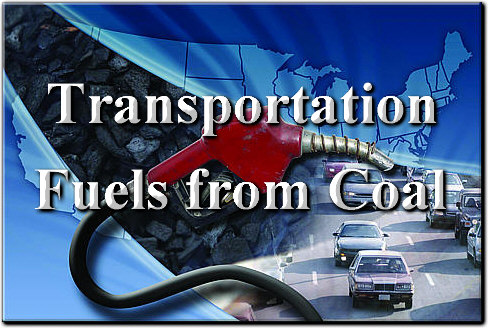 e, ultra-clean
diesel fuel, jet fuel, naphtha, and synthetic oils. Two
basic paths are employed in converting coal to motor
fuels via gasification. In the first, the syngas
undergoes an additional process, the Fischer-Tropsch
(FT)
reaction, to convert it to a liquid petroleum
product. The FT process, with coal as a feedstock, was
invented in the 1920s, was used by Germany during World
War II, and has been utilized in South Africa since the
1950s. Today, it is also used in Malaysia and the Middle
East with natural gas as the feedstock. e, ultra-clean
diesel fuel, jet fuel, naphtha, and synthetic oils. Two
basic paths are employed in converting coal to motor
fuels via gasification. In the first, the syngas
undergoes an additional process, the Fischer-Tropsch
(FT)
reaction, to convert it to a liquid petroleum
product. The FT process, with coal as a feedstock, was
invented in the 1920s, was used by Germany during World
War II, and has been utilized in South Africa since the
1950s. Today, it is also used in Malaysia and the Middle
East with natural gas as the feedstock.
In
the second process, so-called Methanol- to-Gasoline (MTG),
the syngas is first converted to methanol (a
commercially used process) and the methanol is converted
to gasoline by reacting it over a bed of catalysts. A
commercial MTG plant successfully operated in the 1980s
and early 1990s in New Zealand and plants are under
development in China and in the U.S.
Transportation Fuels from Biomass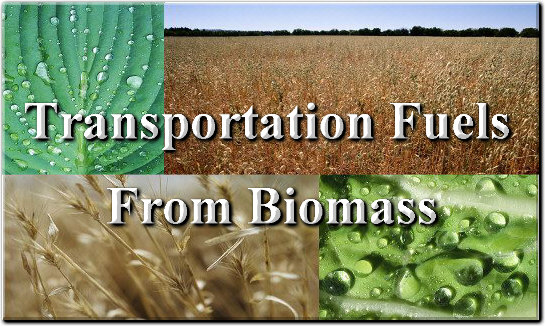
Gasification is also being used as a basis for
converting biomass to transportation fuels. Biomass,
(such as agricultural waste, switch grass, or wood
waste) is converted to a synthesis gas via gasification.
The synthesis gas is then passed over various
proprietary catalysts and converted to transportation
fuels, such as cellulosic ethanol or bio-diesel. Several
biomass-to-liquids plants are now under development.
I
nformation with thanks to the
"Gasification Technologies Council"
|
|



